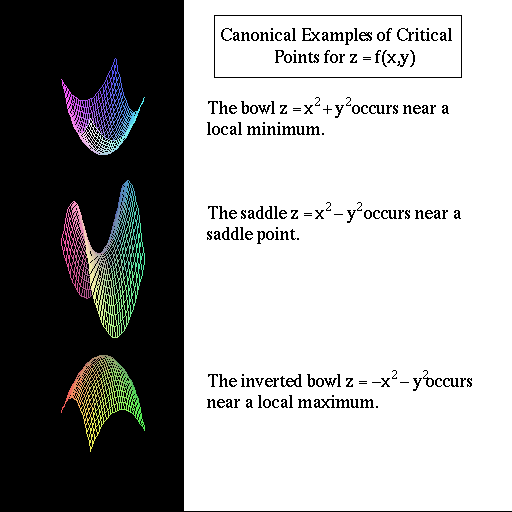
In order to develop a second derivative test, let's assume that the function f(x,y) has a critical point at (x0,y0). A second order (quadratic) Taylor approximation to the function near the critical point is
If we translate the point (x,y) to (x+x0,y+y0) we can write this as
Now, we have three canonical examples of critical points.

If we can make our function g(x,y) look like one of these three, then we
can classify the critical point. Now ![]() since the gradient of
f is the zero vector at a critical point.
since the gradient of
f is the zero vector at a critical point.
If we now complete the square in x and let ![]() , B = fxy(x0,y0), and
, B = fxy(x0,y0), and ![]() , we get that
, we get that
![\begin{displaymath}
g(x,y) = A \left[ \left( x + \frac{B}{2A}y\right)^2 + \left( \frac{4AC -
B^2}{4A^2}\right)y^2 \right].\end{displaymath}](img13.gif) |
(8) |
The type of critical point is related entirely to the second term in parentheses. Comparing the sign of this quantity to the three canonical examples tells us which type of critical point we have. The quantity in question is called the discriminant, D. Note that
| (9) |
Comparison of this with the three canonical examples gives the following